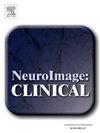评估人工智能辅助脑动脉瘤检测的工作流程影响和临床应用:一项多读者研究
IF 3.6
2区 医学
Q2 NEUROIMAGING
引用次数: 0
摘要
尽管基于人工智能的算法开发了大量用于放射学异常检测,但随后与临床环境的整合很少得到评估。在这项工作中,我们评估了基于人工智能的脑动脉瘤检测模型的适用性和实用性,比较了两名不同经验水平(2年和13年)的读者的表现。我们的目标是回答以下问题:1)在人工智能算法的帮助下,读者是否提高了他们的表现?2)人工智能算法对常规临床工作流程的影响有多大?我们重用并扩大了开放获取的飞行时间磁共振血管造影数据集(N = 460)。我们使用360个主题来训练/验证我们的算法,100个主题作为阅读部分的未见测试集。尽管我们的模型在测试集上达到了最先进的结果(灵敏度= 74%,假阳性率= 1.6),但我们发现初级和高级读者都没有显著提高他们的灵敏度(p = 0.59, p = 1)。此外,我们发现,在“人工智能辅助”设置下,两种读者的阅读时间都明显高于“无辅助”设置(平均+15秒;P =3×10-4 junior, P =3×10-5 senior)。在两种设置中,读者报告的置信度没有变化,这表明人工智能辅助不会影响诊断的确定性。我们的研究结果强调了人工智能算法在涉及放射科医生的临床环境中临床验证的重要性。这项研究应该作为一个提醒,社区总是检查实际的有效性和工作流程的影响所提出的算法。本文章由计算机程序翻译,如有差异,请以英文原文为准。
Assessing workflow impact and clinical utility of AI-assisted brain aneurysm detection: A multi-reader study
Despite the plethora of AI-based algorithms developed for anomaly detection in radiology, subsequent integration into clinical setting is rarely evaluated. In this work, we assess the applicability and utility of an AI-based model for brain aneurysm detection comparing the performance of two readers with different levels of experience (2 and 13 years). We aim to answer the following questions: 1) Do the readers improve their performance when assisted by the AI algorithm? 2) How much does the AI algorithm impact routine clinical workflow? We reuse and enlarge our open-access, Time-Of-Flight Magnetic Resonance Angiography dataset (N = 460). We use 360 subjects for training/validating our algorithm and 100 as unseen test set for the reading session. Even though our model reaches state-of-the-art results on the test set (sensitivity = 74 %, false positive rate = 1.6), we show that neither the junior nor the senior reader significantly increase their sensitivity (p = 0.59, p = 1, respectively). In addition, we find that reading time for both readers is significantly higher in the “AI-assisted” setting than in the “Unassisted” (+15 s, on average; junior, senior). The confidence reported by the readers is unchanged across the two settings, indicating that the AI assistance does not influence the certainty of the diagnosis. Our findings highlight the importance of clinical validation of AI algorithms in a clinical setting involving radiologists. This study should serve as a reminder to the community to always examine the real-word effectiveness and workflow impact of proposed algorithms.
求助全文
通过发布文献求助,成功后即可免费获取论文全文。
去求助
来源期刊

Neuroimage-Clinical
NEUROIMAGING-
CiteScore
7.50
自引率
4.80%
发文量
368
审稿时长
52 days
期刊介绍:
NeuroImage: Clinical, a journal of diseases, disorders and syndromes involving the Nervous System, provides a vehicle for communicating important advances in the study of abnormal structure-function relationships of the human nervous system based on imaging.
The focus of NeuroImage: Clinical is on defining changes to the brain associated with primary neurologic and psychiatric diseases and disorders of the nervous system as well as behavioral syndromes and developmental conditions. The main criterion for judging papers is the extent of scientific advancement in the understanding of the pathophysiologic mechanisms of diseases and disorders, in identification of functional models that link clinical signs and symptoms with brain function and in the creation of image based tools applicable to a broad range of clinical needs including diagnosis, monitoring and tracking of illness, predicting therapeutic response and development of new treatments. Papers dealing with structure and function in animal models will also be considered if they reveal mechanisms that can be readily translated to human conditions.
 求助内容:
求助内容: 应助结果提醒方式:
应助结果提醒方式:


